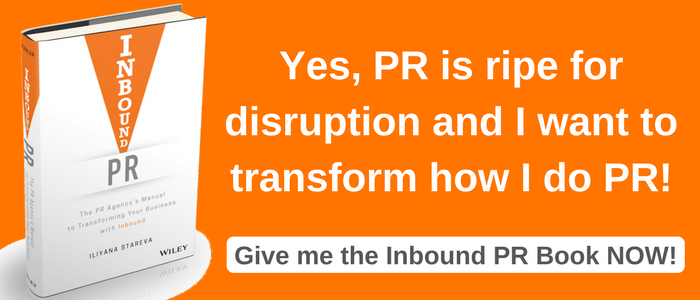 This is a guest post by Mike Davies from ITPR.
This is a guest post by Mike Davies from ITPR.
Social media is a collection of platforms which allows businesses, organisations and individuals to engage with an audience, share content, gain awareness and “be part of conversations”.
If you think that sounds pretty similar – if not the same – to what public relations is all about then you’d be right.
You would also think, then, that public relations would be the natural “owner” of social media campaigning but, as with many other digital shifts, the PR industry as a whole was painfully slow to adapt to the potential of social media.
To fill the vacuum, dedicated social media agencies spawned their very own niche in the market.
Even now, many PR agencies still fail to understand or at least utilise social media in their campaign plans.
This, despite the PRCA’s recent PR and Communications Census finding that Online Communications has increased in importance for PR within the last year, according to 28% of those surveyed.
But with Inbound PR, some agencies are finally realising the potential for their campaigns and for their clients to use social media to reach out directly to prospects, customers and journalists and to increase the impact of their Earned media coverage.
By sharing content on channels like LinkedIn, Facebook, Twitter and even more “consumer” focussed channels like Instagram, you can help shape public opinion and your brand and increase the size of your following beyond the traditional press coverage and website traffic.
In this blog we will look at how PR agencies can take advantage of social media in their campaigns to create a more integrated and rounded Inbound PR campaign, and outline some of the benefits they can see as a result.
6 Key Steps to Reclaiming Social Media With Inbound PR
#1 Create your plan
One of the biggest mistakes many organisations make when it comes to social media is that they get into a mindset that to “do social media” you just have to send a few posts out a couple of times a week, maybe like a few articles and post the occasional article of your own when you have time.
Then they sit around surprised when it doesn’t work.
Social media, like any other part of an Inbound PR strategy, needs to start with a plan and sit within the wider PR and inbound marketing plan.
For instance, mapping out a three-month plan for each of your social media channels will allow you to identify any diary events – like announcements, exhibitions or events – and plan in content specifically for those events.
Knowing you have these key events planned, you can then be more flexible and ensure you are also covering the more “reactive” aspects of commenting or posting about breaking news or key industry developments.
Having this plan can also help to lay down what kind of content will work best for each channel, and put in steps to measure the success of each channel to ensure you are getting results.
Which brings us on to the next step:
#2 Choose the right channels
The whole point of Inbound PR is to put your business and content in front of your audience via the channels and media they use and consume.
If your business is a software development company, it is highly unlikely that you’ll be trying to get seen in the latest issue of Vogue.
So, it follows that if all your audience is using LinkedIn and Twitter then that’s where you should be focussing, rather than trying to be seen as “cool” by posting cat GIFs on Facebook or Instagram.
That’s not to say that those channels can’t work for your business and if your research tells you that you’ll get success on them then go nuts (maybe with something better than GIFS though).
#3 Stop with the personal promotion
How many times have you scrolled through the Twitter feed of a company and seen a constant stream of:
“We’re great at…”
“Our solutions excel at…”
“You should use our software because…”
And, be honest, how likely would you be to follow a social media feed like this?
It can be an ego crushing moment, but you have to understand and realise that your customers and prospects really don’t care about your business – sorry, but they don’t.
What they care about is making their own businesses better.
When they go on social media they’re not looking for advertisements, they’re looking for interesting articles about the problems they have and tips or solutions to get over them – or maybe just something that makes them think.
Again, they don’t want to be sold to.
If you want actual proof of this, research by Forrester found that 68% of B2B customers prefer to research independently online before talking to a sales rep.
Even further to that, 60% of buyers would rather not communicate with sales reps as their primary course of information at all.
If you look at the shift in popularity and success of more “Inbound” based campaigns in recent years and the declining results of disruptive “Outbound” campaigns, you start to see a pattern that giving customers useful information they can use in an entertaining format is going to be far more successful than a glaring advertisement for your company.
Also, don’t be afraid to share something interesting with your followers (even if you didn’t write it) or comment on an interesting post or article – it is social media afterall.
#4 Build your profile
Long gone are the days when having yours or your company’s name appear in the trade or national press was the only way to “raise your profile” in the eyes of the industry.
While the media remains a highly coveted avenue to creating a personal or company profile, your owned channels and social media now present the opportunity to “cut out the middle men” and get in front of your audience on your own terms.
This is when getting your content right is absolutely essential.
If you want to build an online reputation as a salesman, then by all means carry on with the salesy posts and promotional pithches you’ve always done. If you want to become known as a “thought leader” then you need to be commenting on industry events, providing insightful solutions to customer problems and – above all – having an opinion on the important trends and goings on in your industry.
#5 Plan your crisis comms
If there is one PR problem which has been exacerbated by the rise of social media, it is that of dealing with a crisis. Information – whether it’s true or not – can pass so quickly through the world of digital media that a company could be deep diving into a crisis before it even knows there was a problem in the first place.
The phenomenon of fake news has come to exemplify the issue of trying to get on top of a crisis quickly and – while social media is a platform which can spread fake news and a crisis – it can also be used to get on top of a crisis.
By putting information into the public sphere directly through your own social media channels you can quickly quash damaging rumours or news or put the record straight without having to wait for the next day’s paper or for your side of the story to be printed.
#6 Measure your results
“How many followers did we get this quarter?”
“How many people liked our latest Facebook post”?
“How many reTweets did our last announcement get?”
These are typically the questions agencies are asked by clients when it comes to the social media element of their campaigns.
The only answer to give in this situation, to be blunt, is: “Who cares.”
Now, that might sound counter-intuitive when it comes to social media but what all of those questions have in common is that they are enquiring about vanity metrics.
Having 1,000,000 followers might sound good but if none of those followers are going through to your website, converting on a form or turning into customers then what benefit are they having?
On the other hand, if you generate 10,000 followers and 9,000 of those click through to a landing page and eventually become customers – well, which would you prefer?
And this is key when it comes to social media within an Inbound PR campaign.
When measuring your campaign’s success, you should always be thinking of how much traffic your activity is sending to your website and once they are there, how many of those visitors are converting.
Anything else is just stroking your own ego.
Have you got to grips with using social media for your Inbound PR campaigns?







